Memory, Method & Making - The Power of Documenting an Artistic Practice
How project journals became an essential tool
Several years ago, I started keeping journals to document my creative process. I was embarking on new ways of making artwork, and I wasn’t yet sure of either my purpose or the direction I was headed.
The choice to begin keeping the journals was deliberate. I had had many false starts in the past, starting and discarding journals over and over, and my shelves are stocked with partially-finished books. I think this time I was more successful for two reasons: I took a lovely online course from Domestika, which got me off and running, and I did not fight my own tendencies – to include more photos than sketches, to leave space for lots of words, to tape samples of my raw materials right to the page. When I abandoned the idea that there was a “right way” to keep project journals, and embraced instead what was right for me, they began to work.
My art-making life can be divided into two: before I became ill, and after. Before, I was making art to sell at art fairs and in gift shops. What I needed was lists – of how many of which things I needed by what date, of ideas for designs I could put on Christmas ornaments. I made sketches in my journals, yes, but with a very particular aim in mind each time.
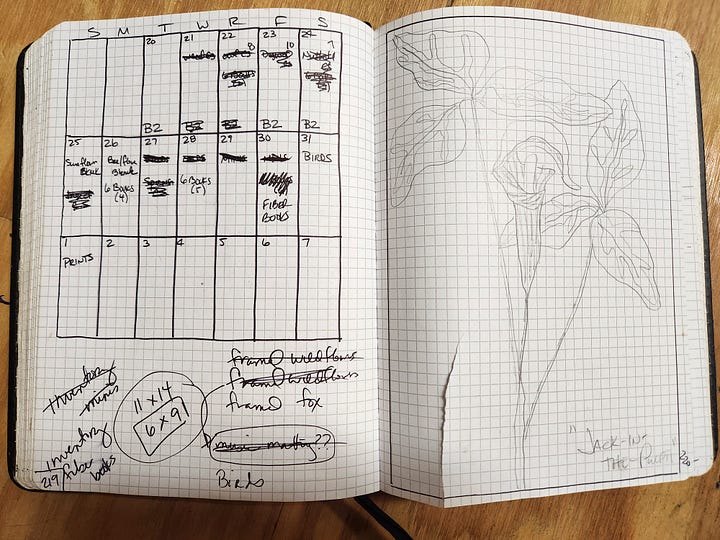
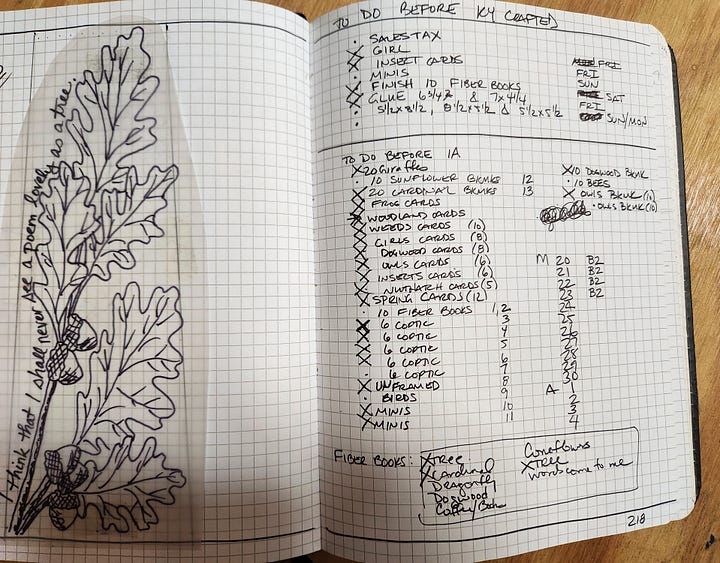
Since I became ill, my art-making has changed. It has both slowed down and expanded. With mostly self-imposed deadlines, and with no particular end goal in mind for particular pieces, I was searching for a way to organize myself and find my way through.
I felt my way into journaling, trying different methods until I settled on a roughly three-step process that works for me.
1. I start with inspiration – I paste into my books nature photos I’ve taken, photos of artwork by others that inspires me, quotes from books I’m reading.
2. Then I tape things directly into the book: sample swatches, materials I’m using, my color palette if I’m embroidering. I make some sketches and work out ideas.
3. At the end, I paste in photos of the finished artwork, and I journal, write notes, and work on an artist statement for each piece.
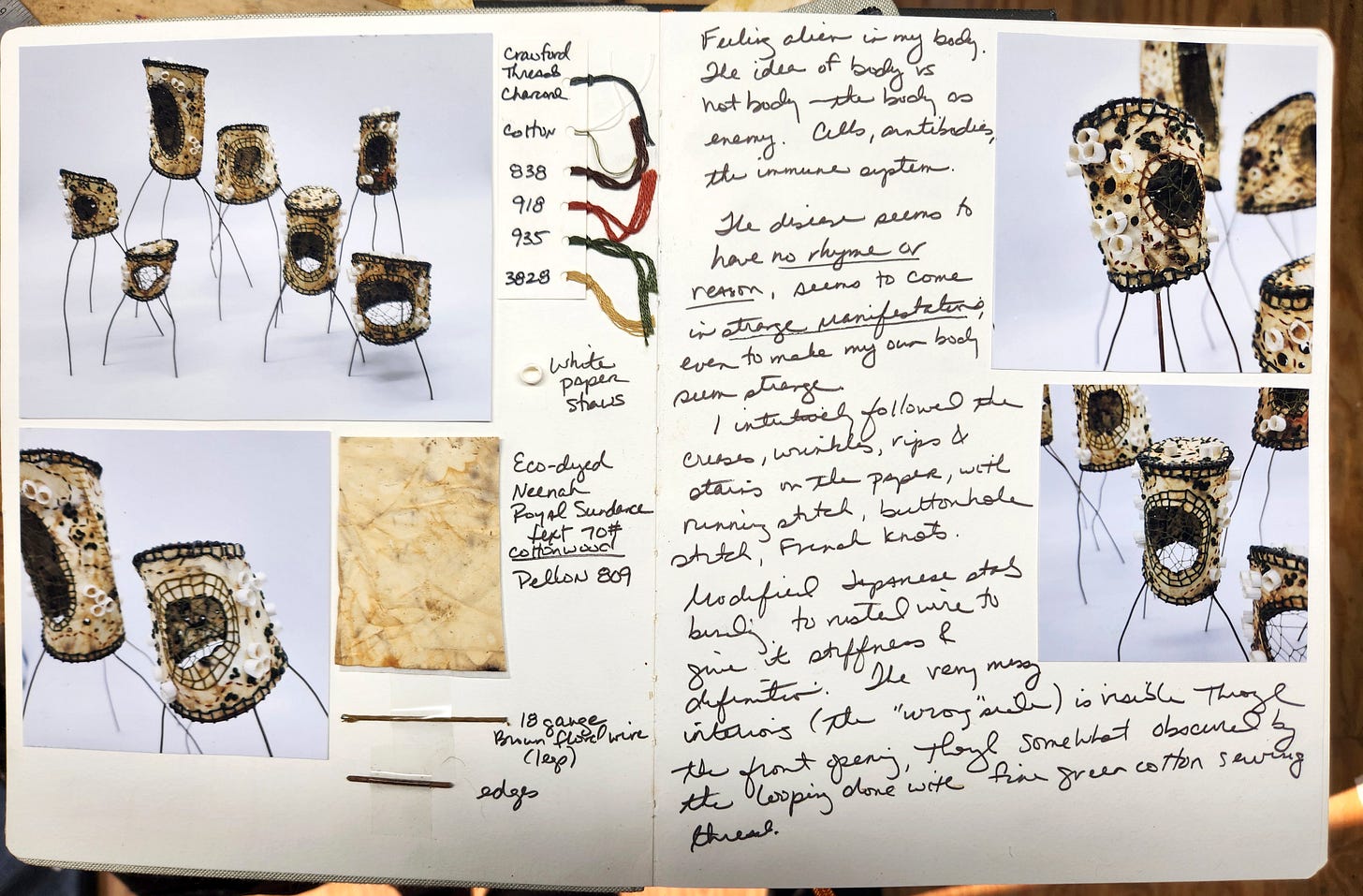
There is, of course, no one right way to document an art practice. I think keeping project journals in this particular way works for me for two main reasons.
First, I’m a chemical engineer by training, and worked professionally as an engineer for a decade, much of that spent keeping a laboratory notebook that had very particular qualities. Everything was dated and described thoroughly so another person could repeat my work if necessary. Supporting documents, photos, and charts were all pasted in with double-sided tape and labeled. I had grown used to and comfortable working this way. I merely modified it for my art practice.
Second, I recently learned that I have aphantasia. I do not and cannot form mental pictures in my mind. For my entire life, when someone said “picture an apple,” I assumed it was metaphoric, since the inside of my mind is just blackness. I understand what an apple looks like, and can describe it, and can draw it. Similarly, I know how certain things I do in my art practice will work, but I am seeing my artwork for the first time only as it emerges during the making. Perhaps because of this, I rely heavily on photographs, sketches, and chance in the development of my work.
I keep my project journals in order to uncover and discover what it is that I’m making, in order to reflect on and process what emerges in the studio. And, of course, I’d like to be able to reproduce successful processes in the future.
When I Know What I Want to Make
For me, work can start in many ways. Sometimes I have a specific idea, and I merely need to figure out what materials and processes I require to manifest it into the world. In that case, my project journal might just be a few pages, documenting the idea, marking down a few notes and ideas, a sketch or two, and recording the materials and processes I used in the making. After the piece is finished, I paste in a few photographs of the final work and journal a bit or write an artist statement. This was how my piece When Knowledge Doesn’t Feel Like Power was made. I knew I wanted to use pages from Gray’s Anatomy, eco-dyeing and embroidering them, and mounting them on a foraged vine structure. The work emerged quickly from there.
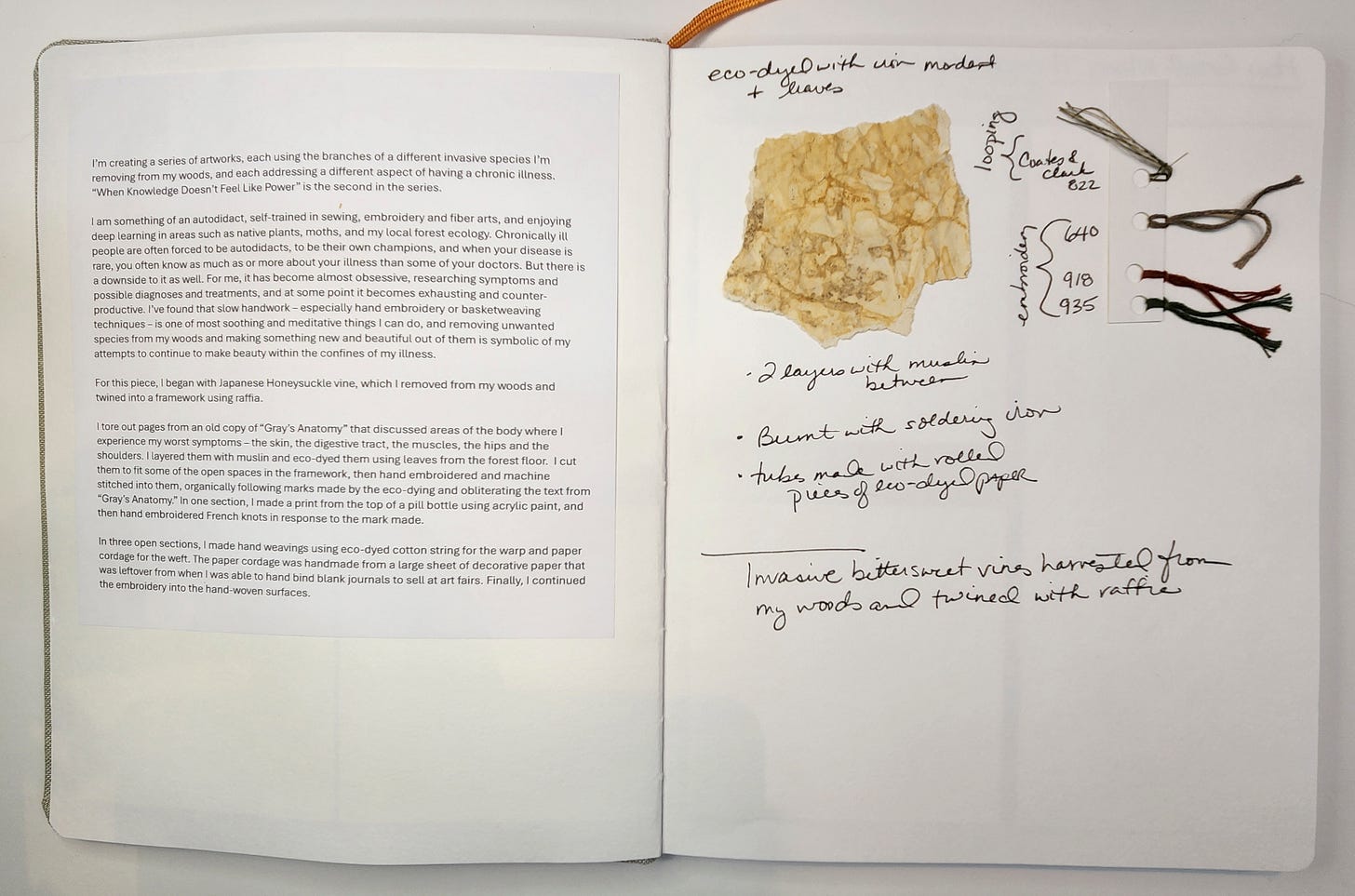
When I Have Just a Hint of an Idea
But sometimes I have barely the hint of an idea, or even just a subject, to start. This was how my Moths project began. I am a moth-er, which is like a birder, except I look at, photograph, and identify the moths that come to a blacklight I set up in my back yard. I have more than 1,000 photos of beautiful moths I’ve seen, and I wanted to do a project related to them.
In this instance, I started a brand-new journal from scratch, just for this subject. I pasted in photos that I had taken of moths, along with photos of moths and moth artwork I found on Pinterest and Instagram. I drew, collaged, doodled, and sketched, trying to find my way into the artwork. I was interested in the scales on moth wings, the shapes of their eggs and their cocoons, the tracks their caterpillars leave in the leaves of plants.
For the first part of my moth project, I settled on reproducing a variety of species I’ve photographed, and to hang them together in a grouping on the wall. (But one of the nice things about keeping project journals is that, when I finish that part of the project, I’ll be able to circle back to those other interesting things – the cocoons, the moth eggs, the caterpillar trails – because I’ve got them safely documented in my project journal.)
I then had to figure out how I was going to reproduce each moth species. Flipping through the journal now, I can see my progression, my false starts and experiments, and I see the evolution that brought me to the final pieces, which are hand embroideries on stitched paper collages.
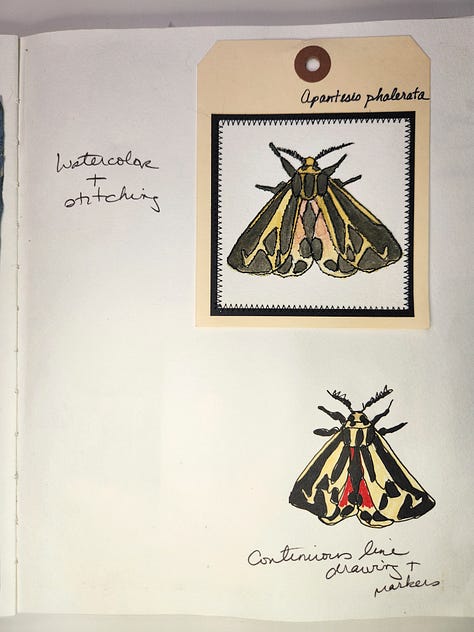
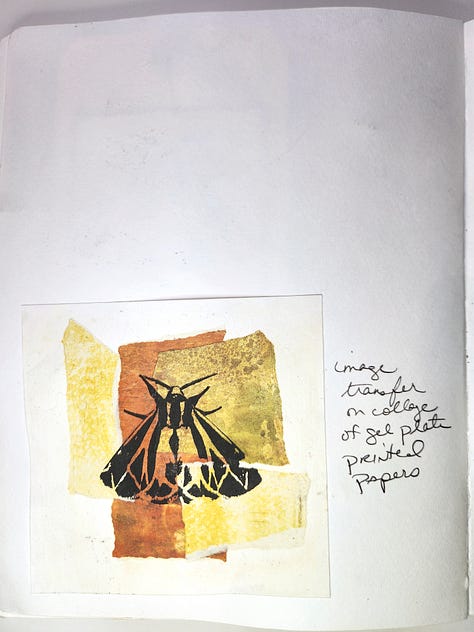
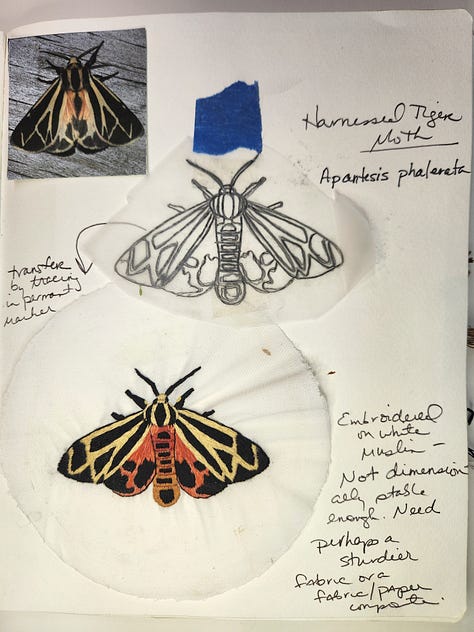
When One Piece Blossoms into a Body of Work
Sometimes the making of one piece of artwork multiplies and expands until I have a whole body of work.
When I first became ill, I had a hard time adjusting when I could no longer take long walks in my woods. I wanted to document my favorite walk along a creek in my woods in some way, since I couldn’t walk it any longer. At the time, I was making some small paper and fabric quilts of forest scenes, and I realized I could create a series of them, each documenting a specific spot along my favorite walk and something memorable I had seen there.
I started a project journal, trying to work out two things: what spots along the walk I would depict, and how I might present the final series of artworks. In the journal, I worked through ideas until I settled on the form of an artist book, with each page representing one spot along the walk.
In my journal, I worked out how I could use free-motion machine stitching to “draw” the plants and mushrooms that would be featured on each page. I found that continuous line drawings could be translated directly into stitch.
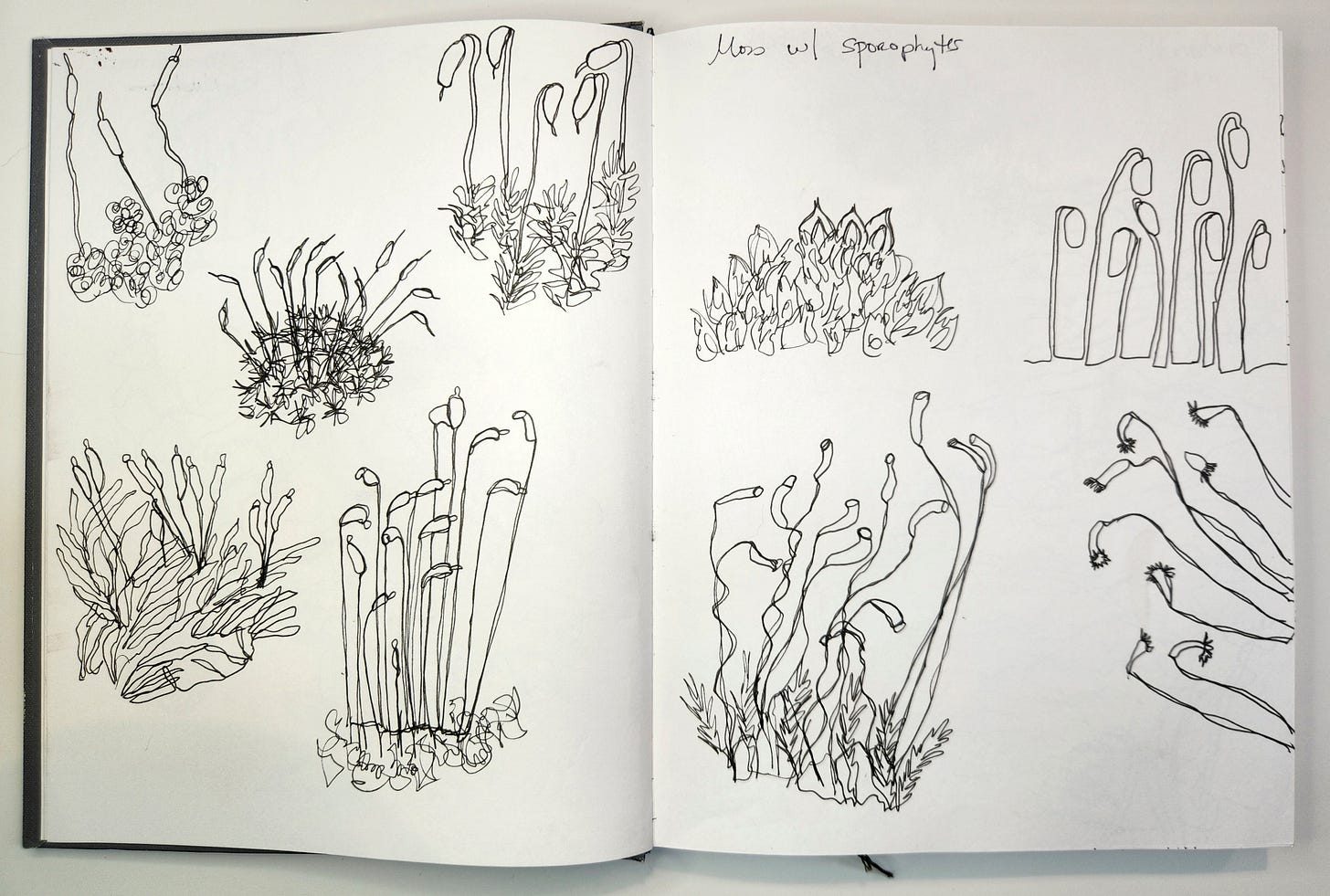
At the end, I documented the final piece, along with notes and in-progress photos.
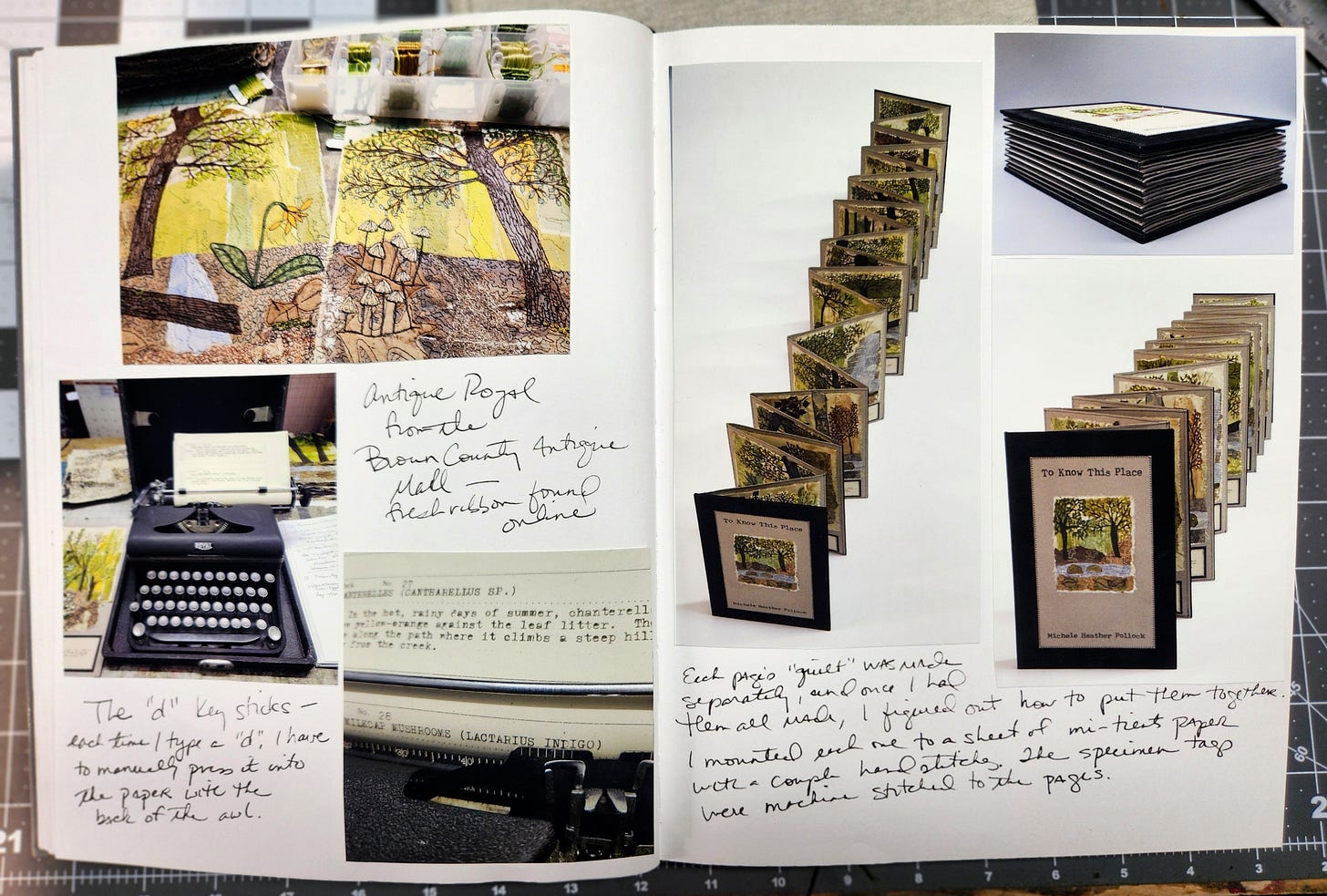
While I was working on this project, which became the artist book To Know This Place, ideas in my journal suggested I could document this place I loved more comprehensively. I began to see the idea of To Know This Place as a body of work, rather than just a single piece. In my journals, I experimented with depicting many aspects of my woods, including capturing the trees through making leaf prints on a gel plate…
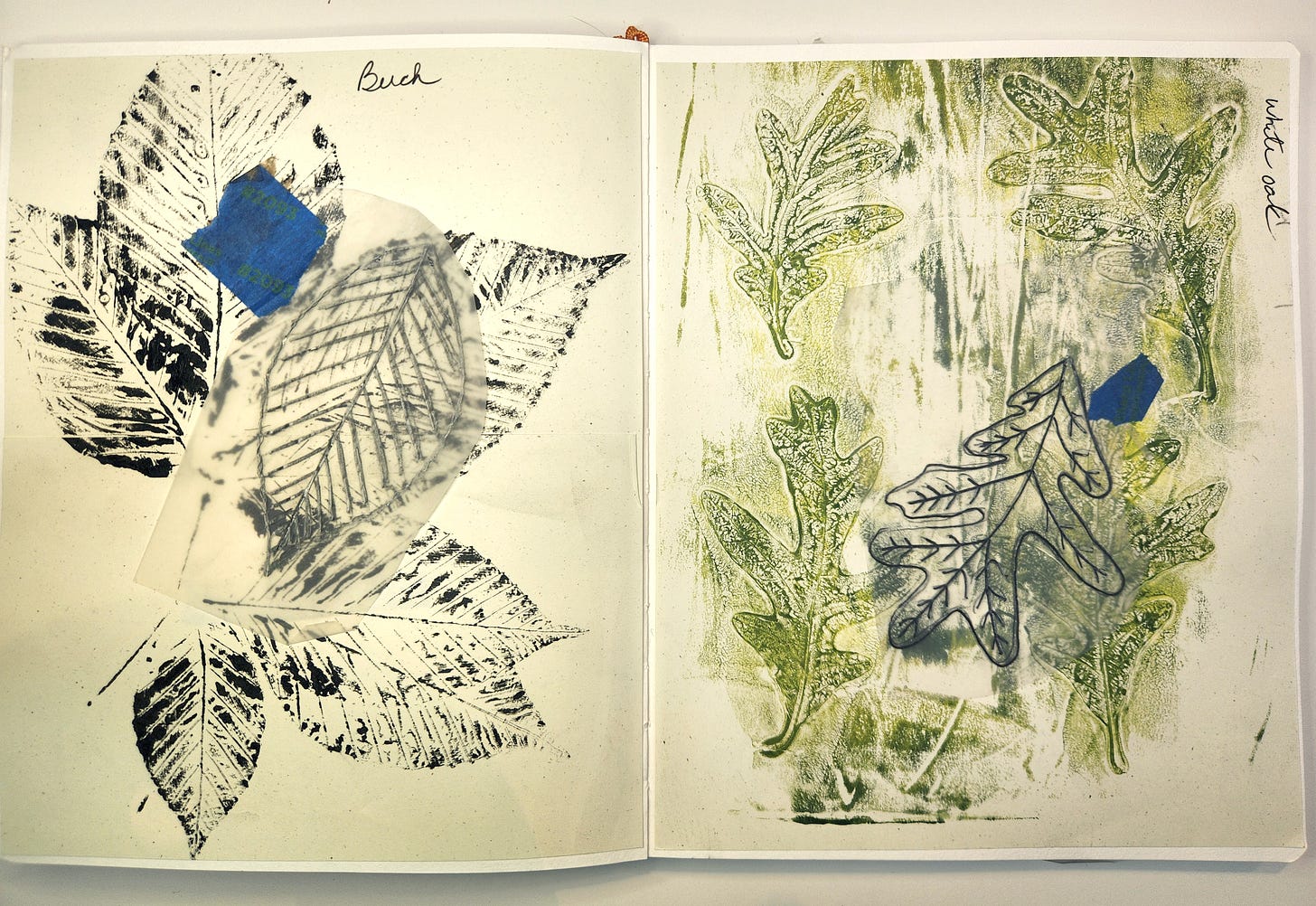
…and finding ways to re-create bits of the forest floor in paper and wire and molded Paperclay and stitch.
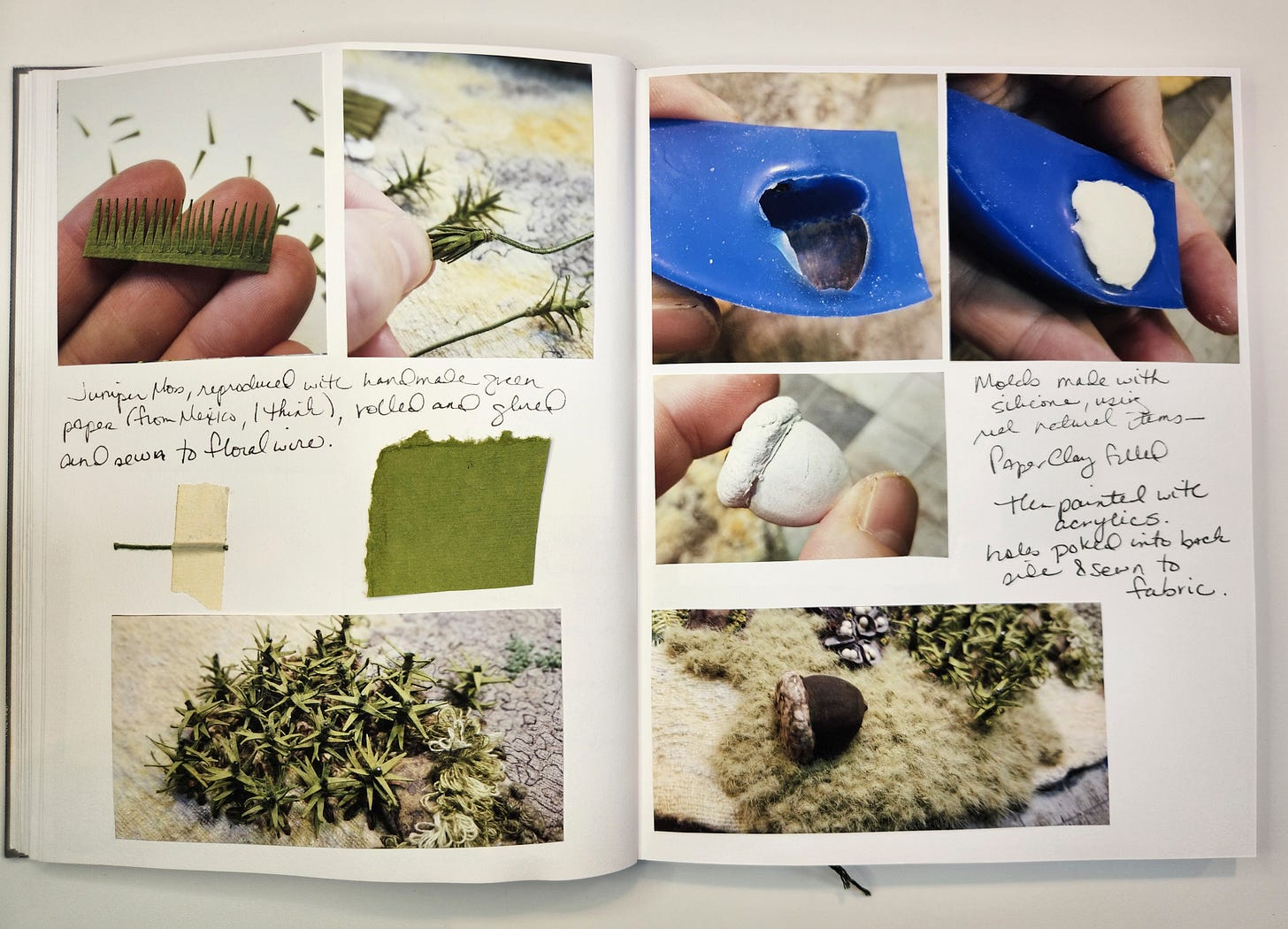
In these project journals, I’ve captured ideas, techniques, emotions and technical challenges encountered along the way. I’ve deepened understanding of my own work, which has led to the creation of a body of work, rather than only individual pieces of art. It made it easier to write artist statements and descriptions of my artwork when I needed them for applications to juried exhibitions and artist residencies.
These journals have allowed me to create a cohesive body of work, and to explain that work to both myself and other people, including the connections between the works, and the connections between the work and my own lived experience.
Nature Walk Journals as Companions to my Art Project Journals
I’ve said before that the photographs I take of things I find on my woods-walk are inspiration for much of my artwork. Although I don’t always do this, at long stretches I have had a second set of journals running parallel to my studio project journals. In these nature walk journals, I paste a curated selection of photographs from my walks, alongside journaling, notes on what I’m reading or listening to, quotes, ideas, and original poetry.
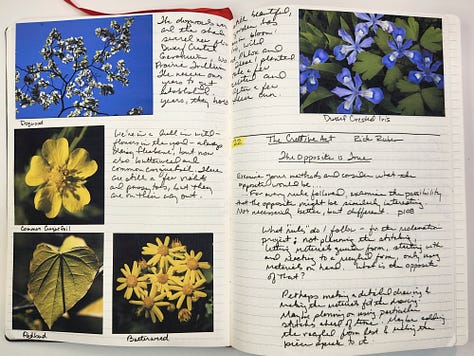
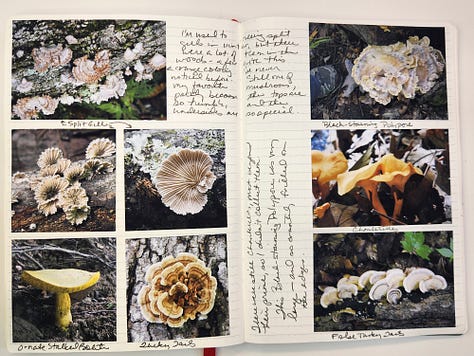
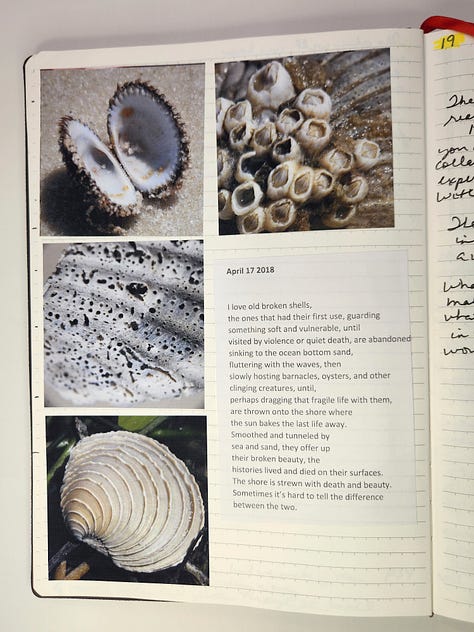
There is no specific goal for these journals, and I can’t always draw a direct line connecting my nature walk journals with individual pieces of artwork. But, looking back, they feel to me like they are all part of the same thing – they run parallel to, augment, and feed my project journals.
Project Journaling and Multi-tasking
I always have lots of projects going at the same time, so I always have lots of project journals going as well – keeping the journals is one reason I’m able to successfully divide my time between multiple projects simultaneously. The journals allow me to come back to a partially completed piece of work without missing a beat. I know what I was thinking about, what techniques I was exploring, the exact color threads I was using to embroider, and which processes I was employing.

Looking back, I see that these journals have been invaluable tools for reflection, growth, and inspiration. They’re not just a record – they’re a mirror, a map, and a catalyst for new work.
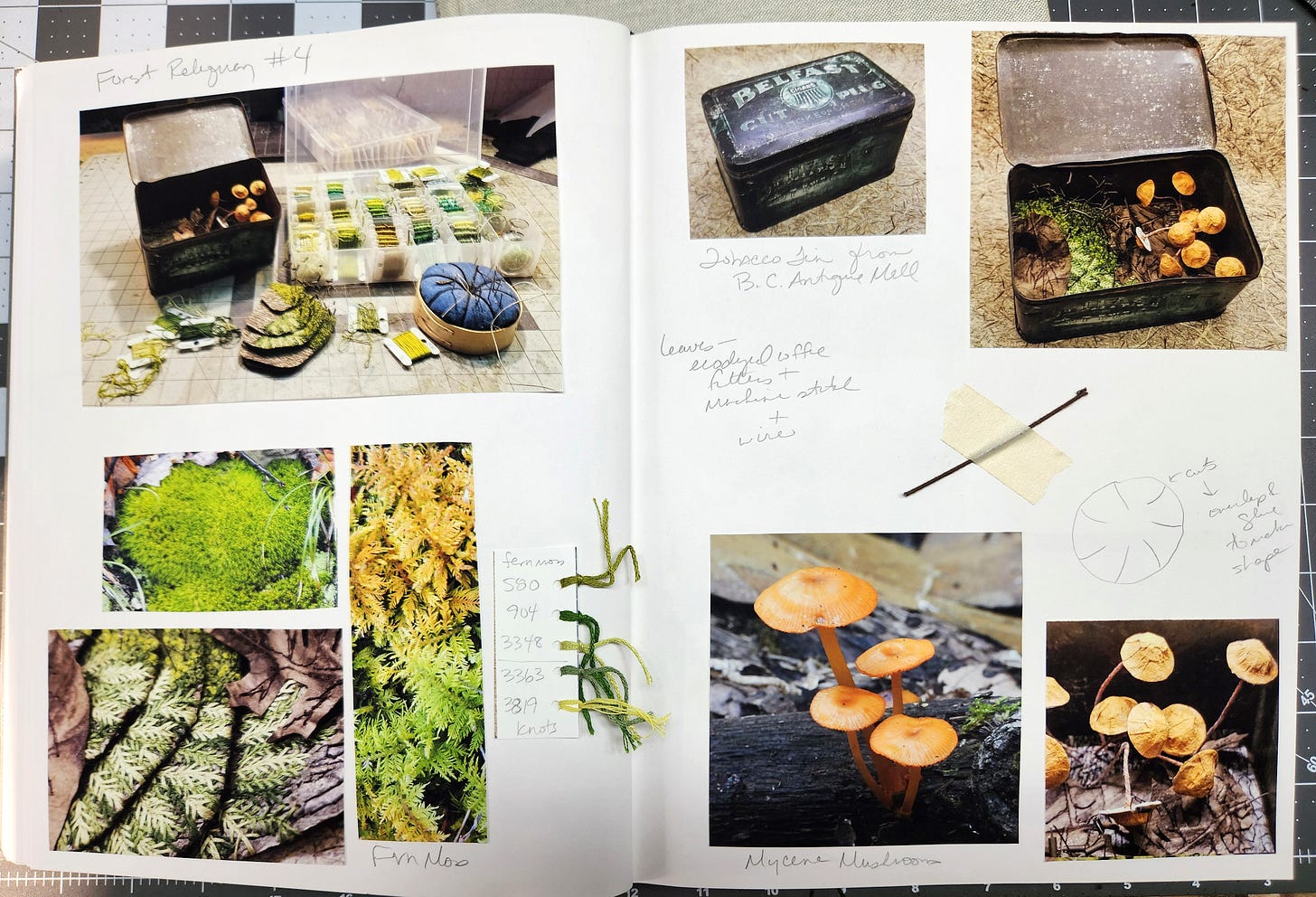
These journals reveal patterns in my work, spark new directions, and preserve fleeting thoughts that might otherwise be lost. They are becoming a personal archive that charts the evolution of my work over time. I don’t think I could do without them.
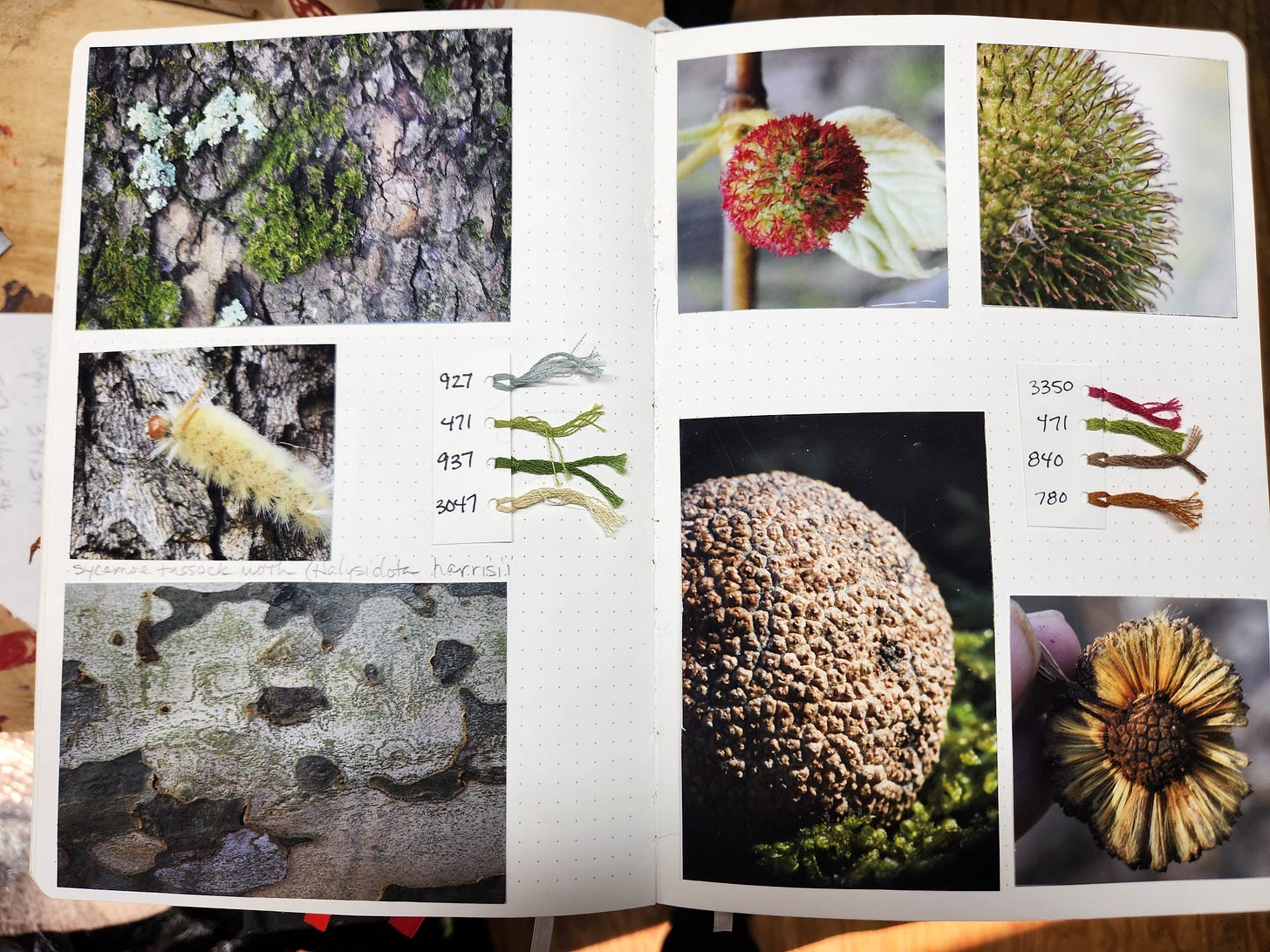
You can see more of my work at my website.



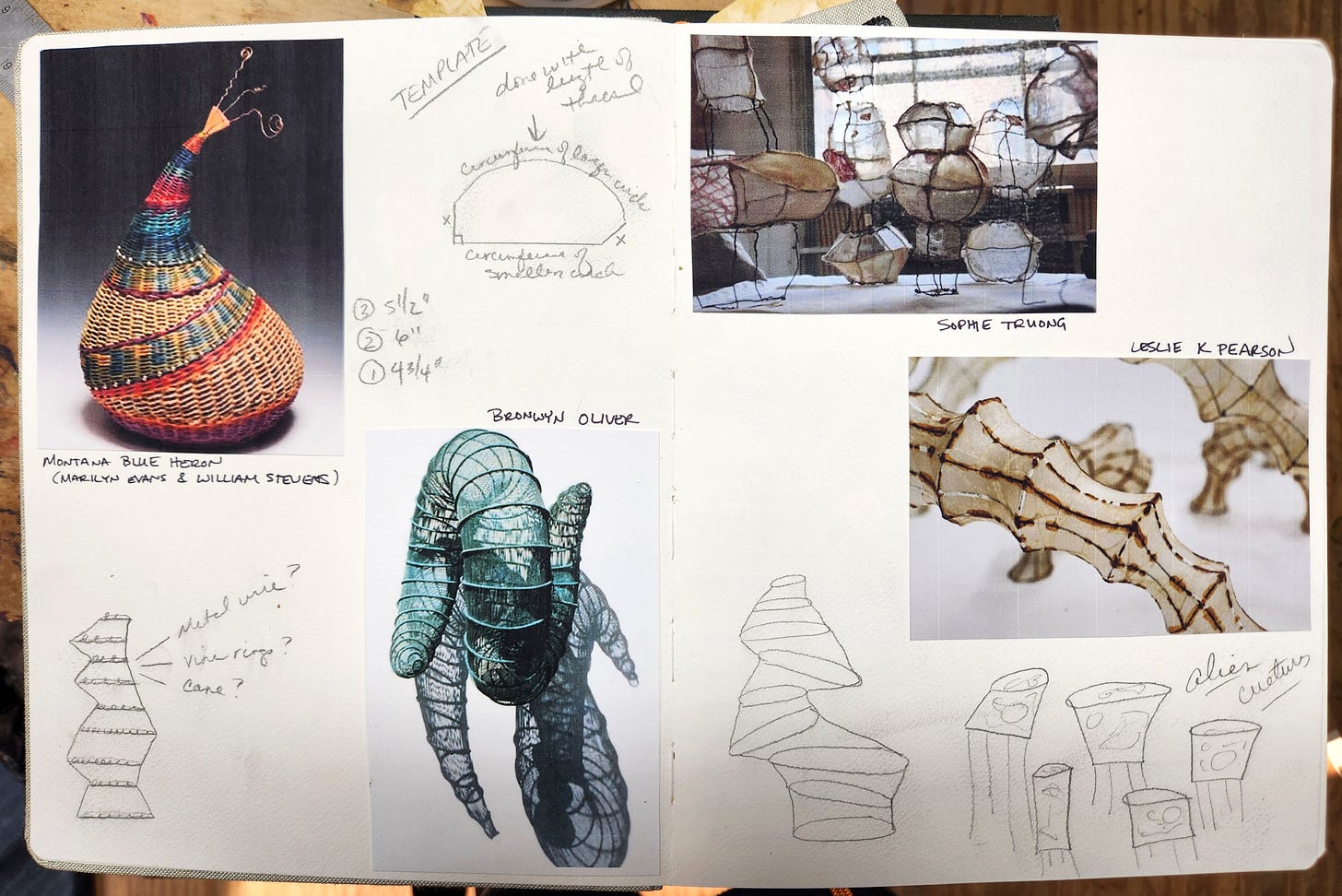
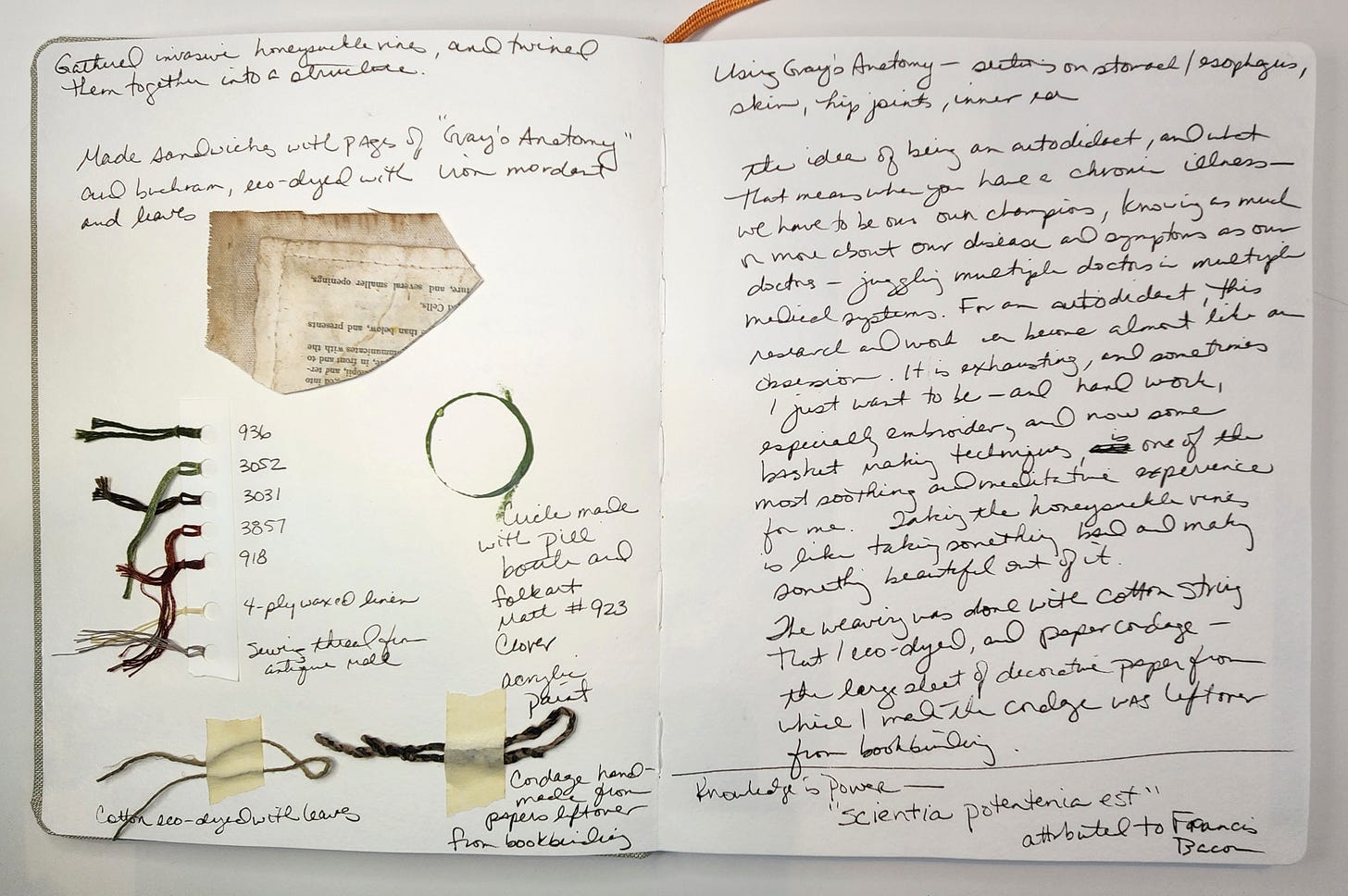
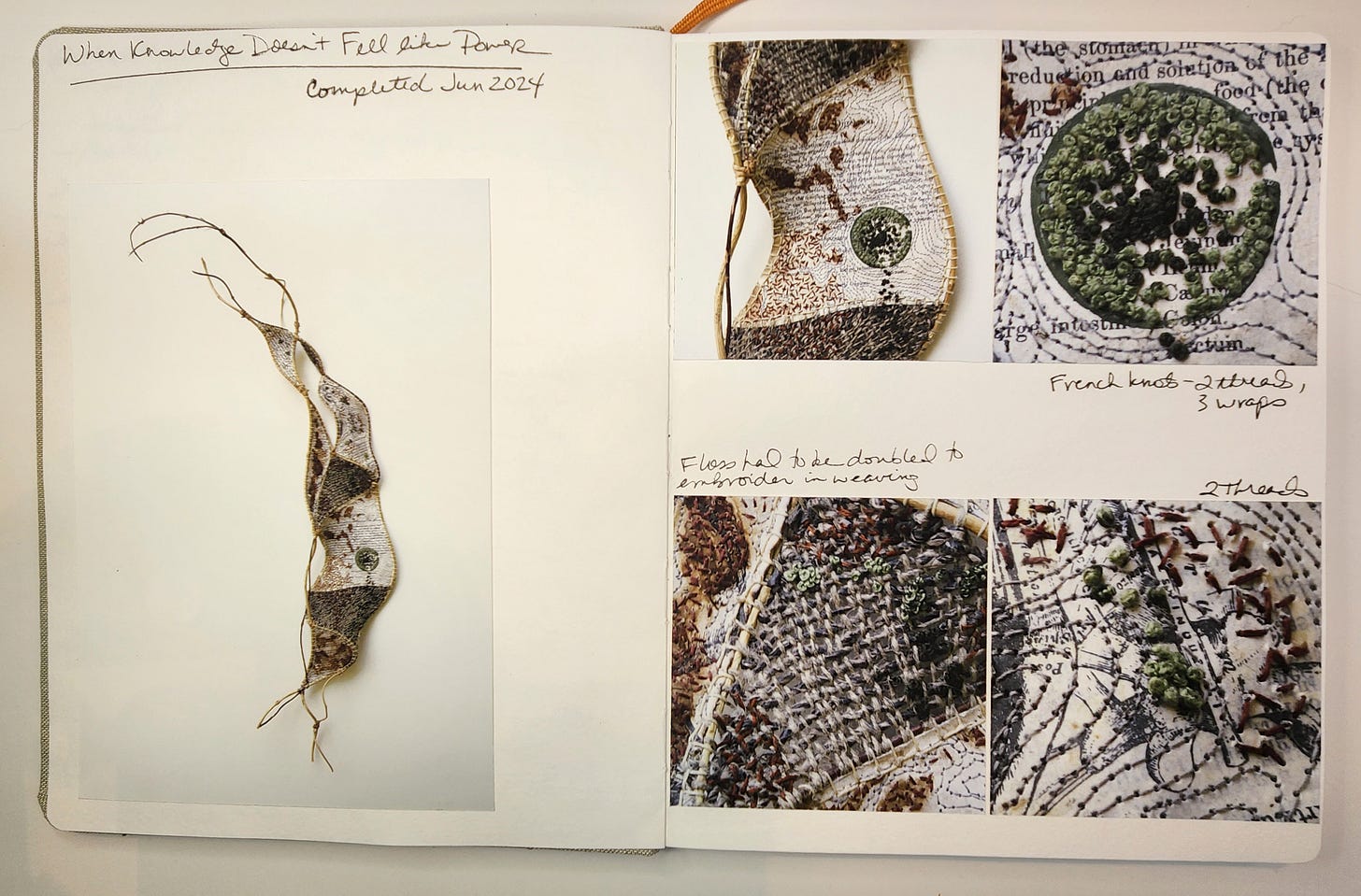
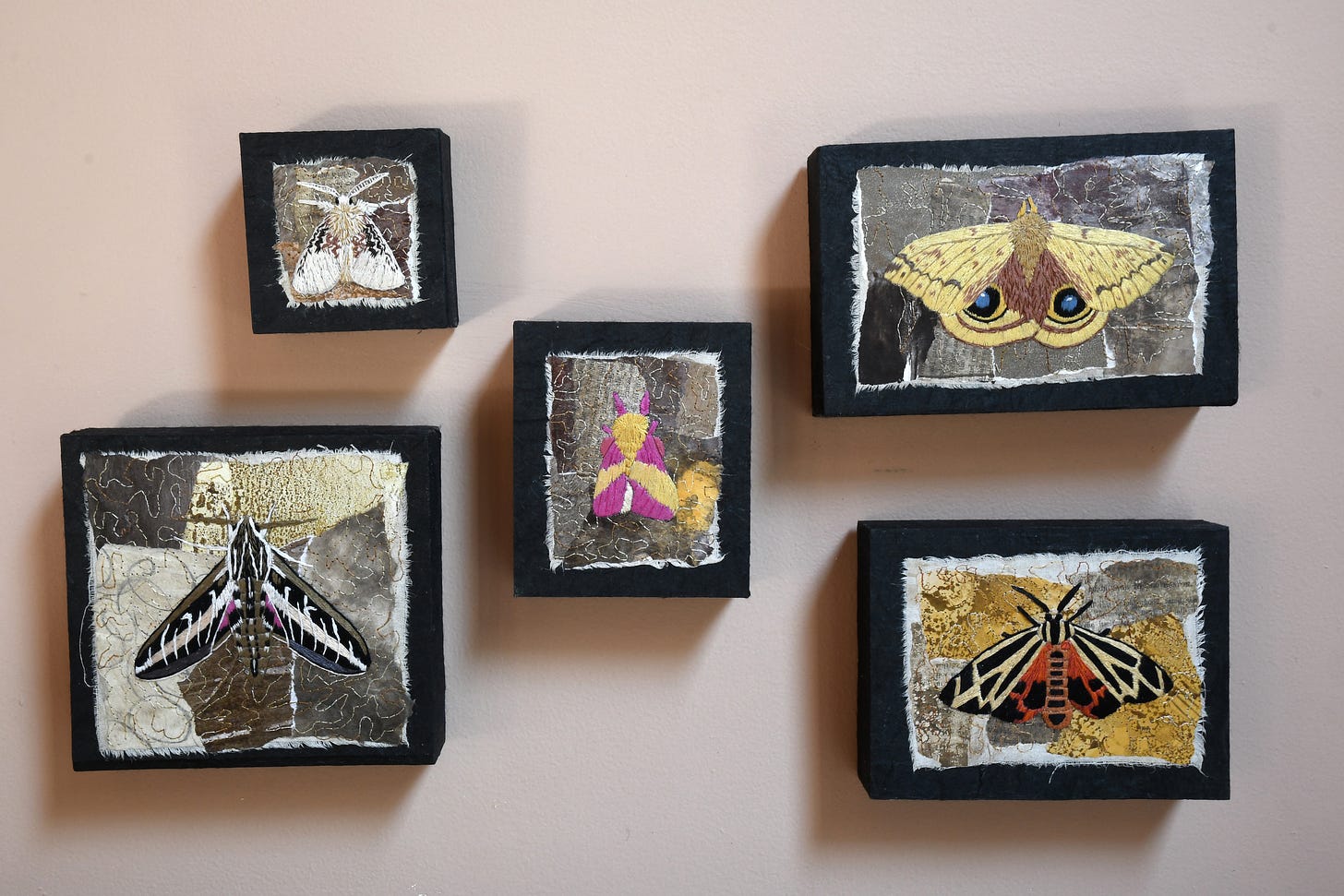
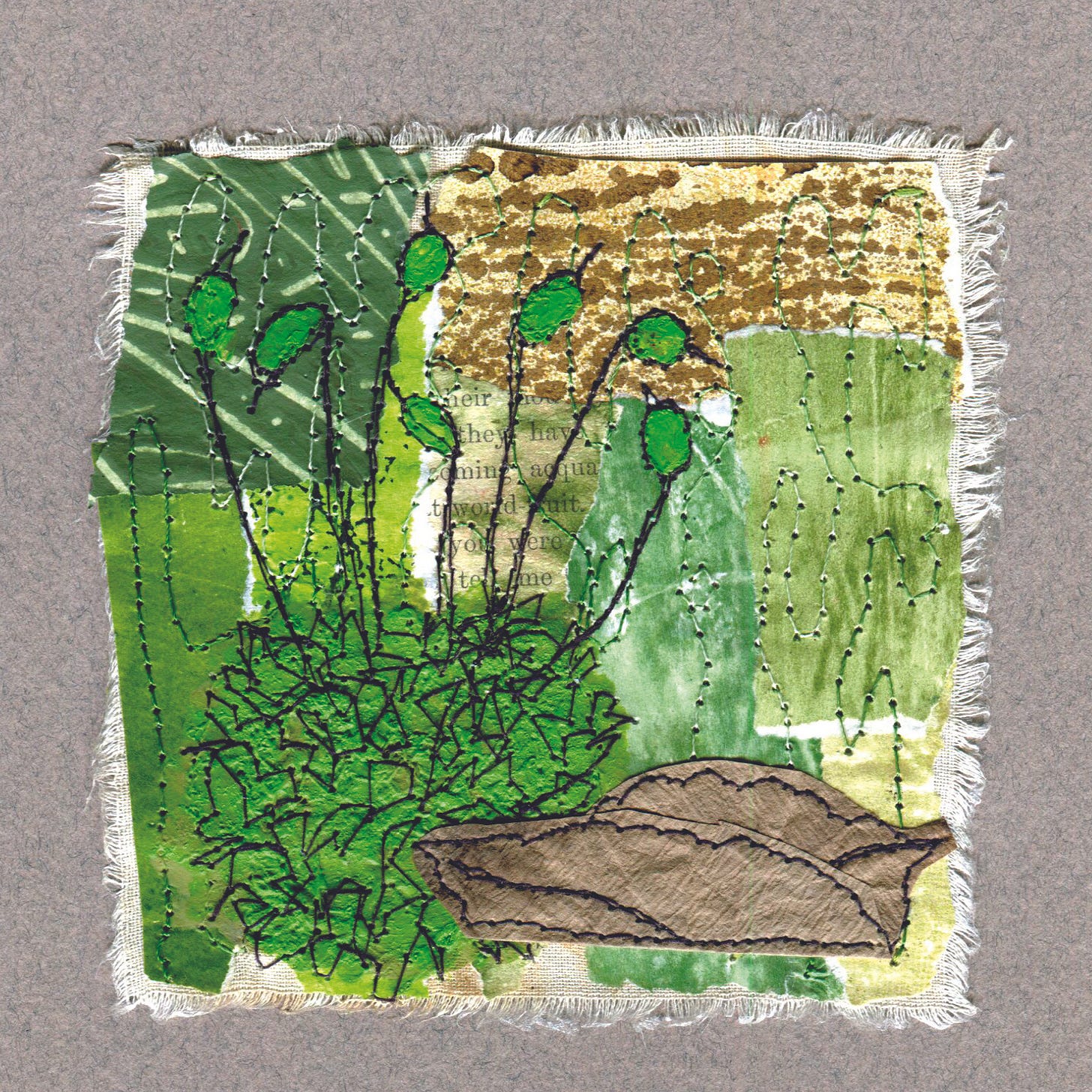
Thank you, your note about those popped up on my notes feed and it was really interesting to read, I often think about gathering my art ideas and prompts together, you've inspired me.
Wonderful, in every possible sense of the word.